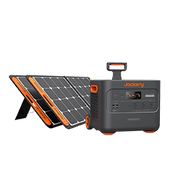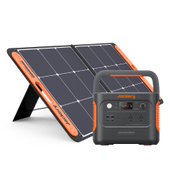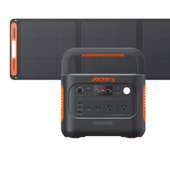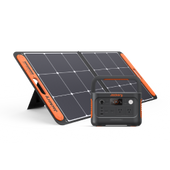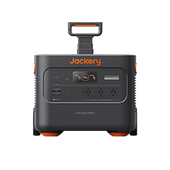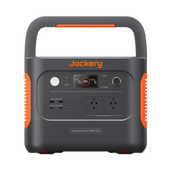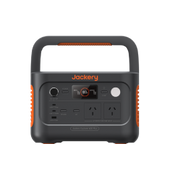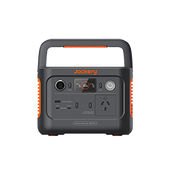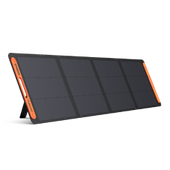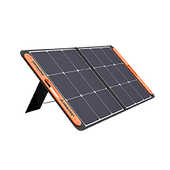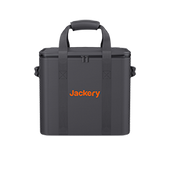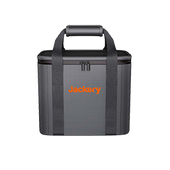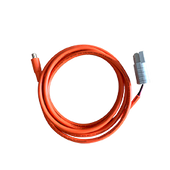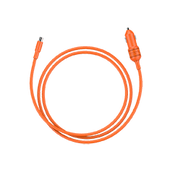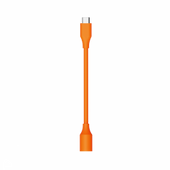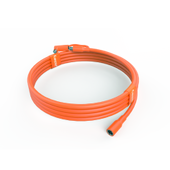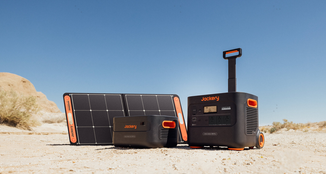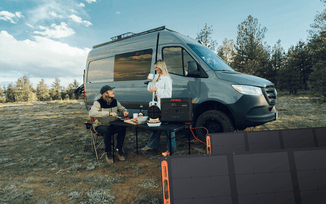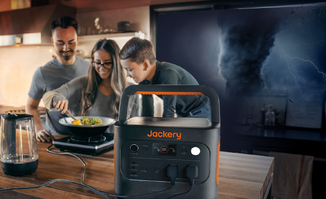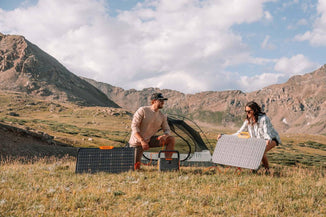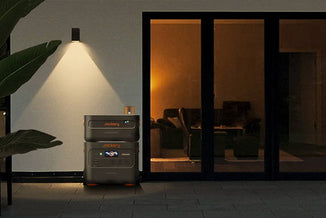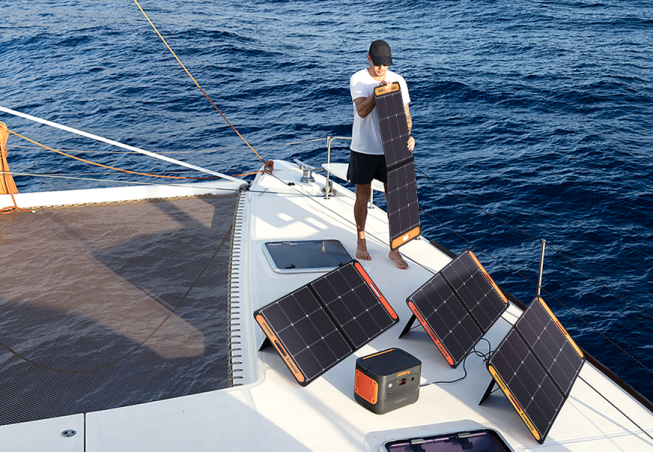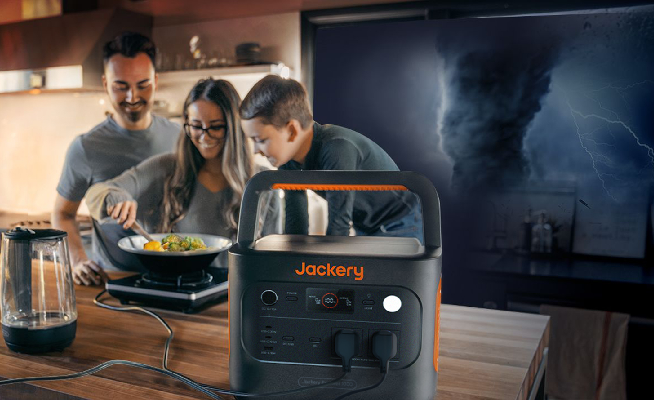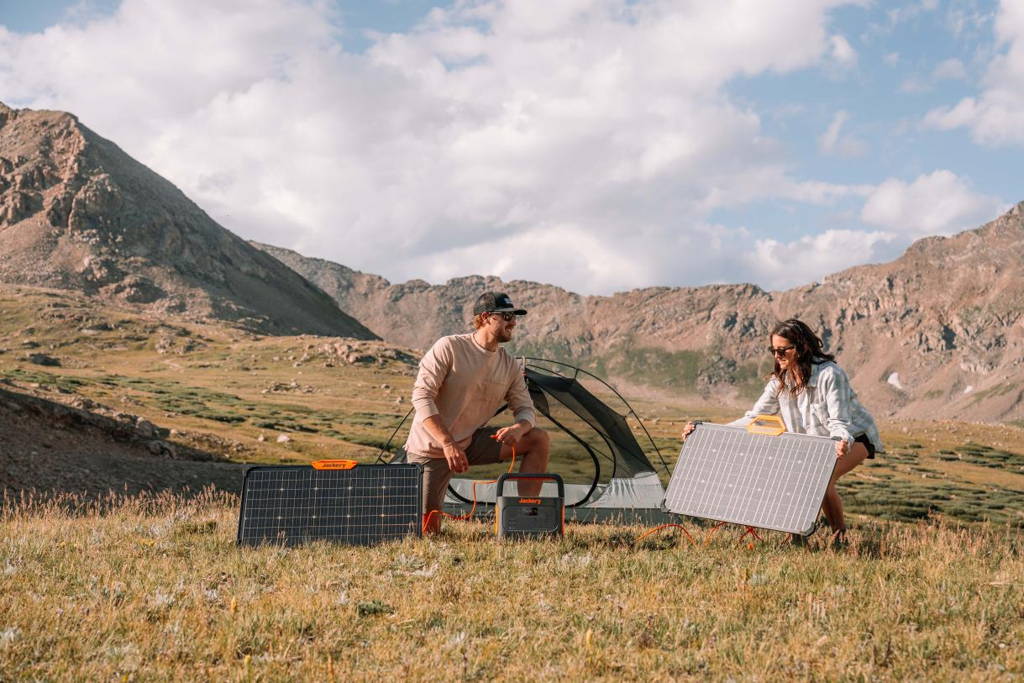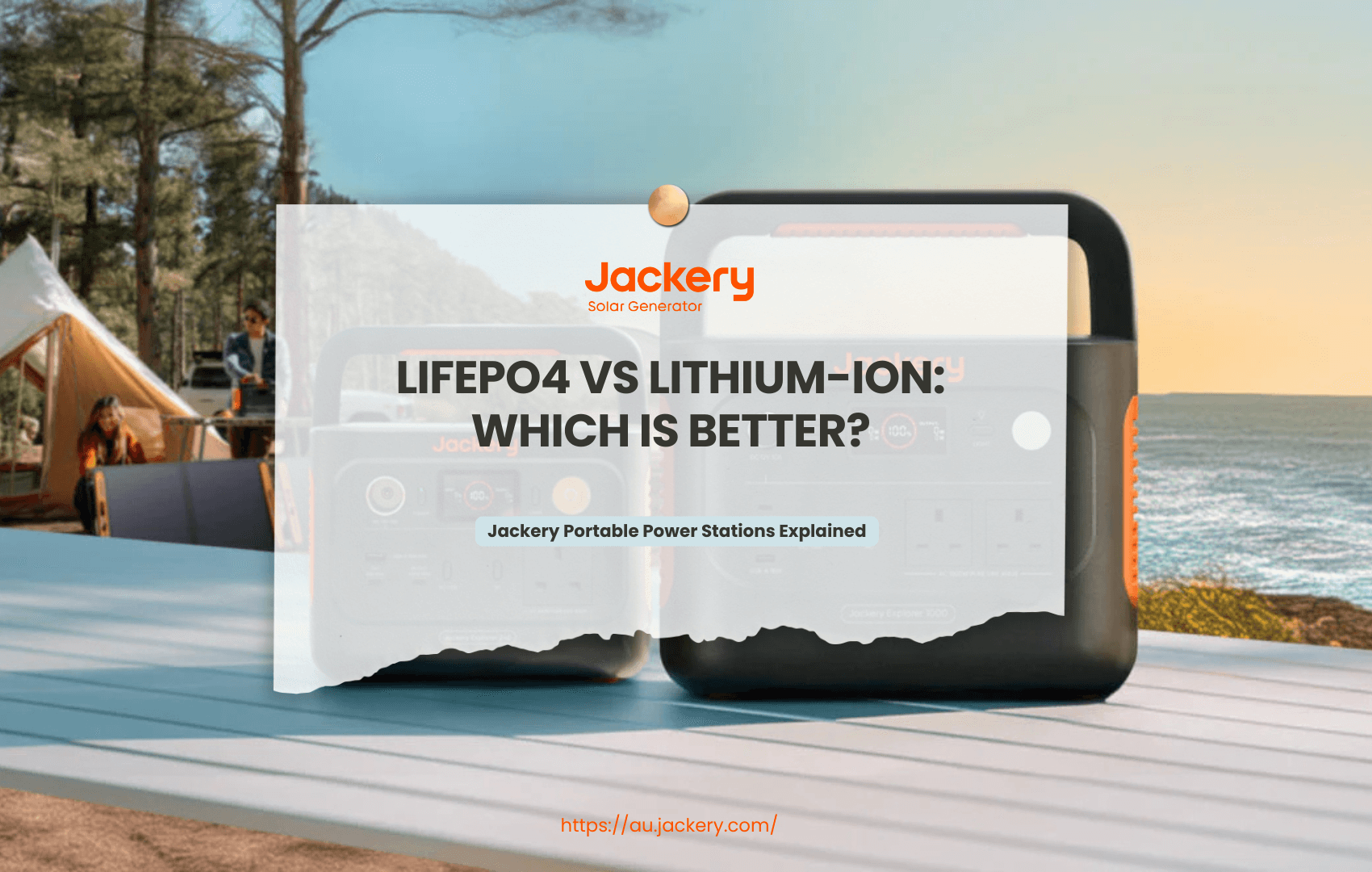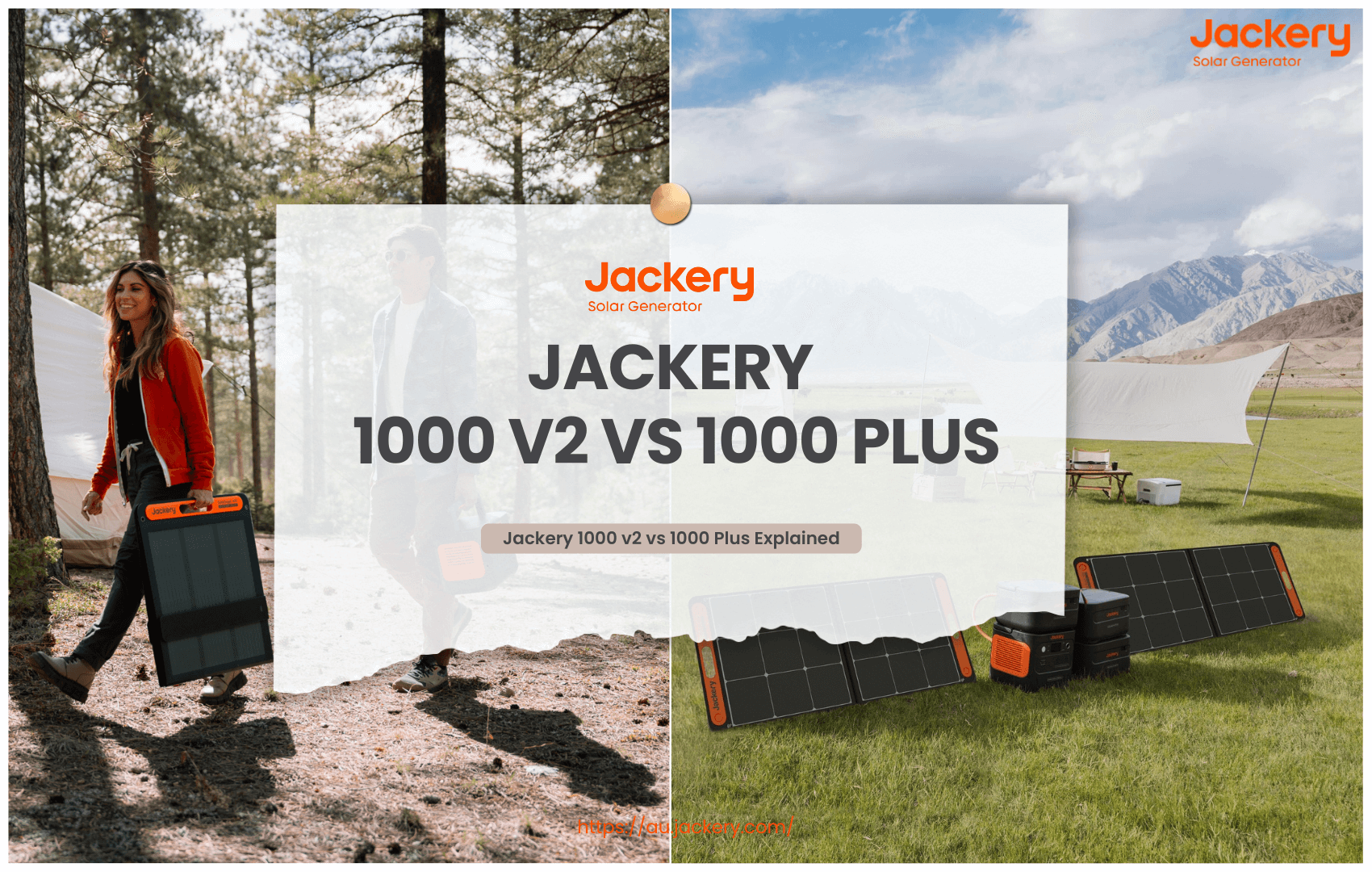|
Key Takeaways: |
|
- For a 1000W inverter, 1000 signifies the continuous power output or the amount of electricity it can consistently supply. - A 1000W inverter converts direct current (often 12V or 24V) from a battery to alternating current, which is the electricity supplied by a regular household plug. - To achieve a one-hour duration, one must divide the actual power consumption (1111 watts) by the battery capacity (83.33 amps), resulting in around 13.34 batteries. - Equipped with a 1000W inverter, you are prepared to experience an enhanced degree of convenience for your electronics and appliances. - We recommend a Jackery Explorer 1000 v2 portable power station with a 1000W pure sine wave inverter inside to smoothly power your appliances and devices. |
Understand a 1000W Inverter
A 1000W inverter is a device that converts the Direct Current (DC) from the battery into Alternating Current (AC), allowing everyday electronics and appliances to work and run.
Without a doubt, it serves as a link between your power source and the devices you rely on the most. Consider it a lifeline when you're on a road trip, in an emergency, or living off the grid without a harnessed power supply. However, if you're seeking inverters, it's important to understand these concepts.
Power Ratings of a 1000W Inverter
Power ratings, often measured in watts, indicate the amount of electricity a system can deliver or handle. There are two sorts of power ratings: continuous and peak.
Continuous Power Rating: For a 1000-watt inverter, 1000 signifies the continuous power output or the amount of electricity it can consistently supply. Keeping this in mind, appliances such as TVs, laptops, and other kitchen equipment that take 1000 watts or more can run smoothly with the usage of this inverter. However, if the number of devices exceeds the threshold limit, the inverter is more likely to fail.
Peak Power Rating: Next follows the peak power rating, which is used when devices are turned on. Most power equipment and appliances, such as refrigerators, require initial higher power bursts, and a 1000W inverter typically has a peak power resistance point capacity that can withstand such situations.
Understanding the difference between continuous and peak power allows you to choose the right devices to run without exceeding your inverter.

Types of 1000W Inverters
Inverters' processing capabilities vary, and the energy they produce is equally important. There are two primary categories of 1000W inverters: pure sine wave and modified sine wave. What distinguishes them, and why is this distinction significant? Pure sine wave inverters generate stable power with negligible distortion. This renders them optimal for delicate electronics and medical apparatus. They provide superior, reliable AC power. This guarantees optimal functionality and improves appliance efficacy by minimising harmonic distortion.
Conversely, modified sine wave inverters are more economical and can operate most appliances, although they may disrupt delicate electronics.
In simple terms, a pure sine wave inverter, such as those offered by Jackery Portable Power Stations, may give you the same power as an energy grid. This consistent power output is beneficial in preventing damage and drop-in efficiency that laptops, medical devices, and modern appliance users encounter.
In comparison, the modified sine wave inverter is simpler and incompatible with a wide range of devices. Because sine waves are the standard, changed sine waves can cause electronics to overheat or hum, among other reasons. This outcome will be significant when there are specific criteria for reliability. As a result, the best option in this scenario is to get a pure sine wave inverter.
What Can a 1000W Inverter Run?
A 1000W inverter converts direct current (often 12V or 24V) from a battery to alternating current, which is the electricity supplied by a regular household plug. This permits you to operate certain household equipment. Because a 1000W inverter has a power limit, you must use appliances with a power rating of less than 1000W. The following are the appliances and devices that a 1000W inverter can run.

Low-Wattage Devices A 1000W Inverter Can Run
A notable advantage of a 1000-watt inverter is its capacity to power many low-wattage devices effortlessly. This indicates that it may be depended upon for daily necessities and urgent requirements. As the devices consume minimal power, operating several simultaneously without exceeding the inverter's capability is feasible.
LED Lights (10-30W each): Ideal for illuminating your space during power outages or outdoor activities while minimising energy consumption.
Wi-Fi Routers (10-20W): Stay connected during critical moments, enabling communication and access to essential information.
Smartphones and Tablets (5-15 Watts): Maintain connectivity and power, regardless of location or power disruptions.
Portable Fans (20-50 Watts): Ensure adequate ventilation and alleviation while maintaining thermal comfort in hot and humid conditions.
These low-power electrical devices demonstrate the capabilities of a 1000-watt inverter. The inverter possesses sufficient power to operate the majority of standard electrical devices. Regardless of whether you are camping, travelling, or facing an unexpected situation, a 1000W inverter will ensure comfort, connectivity, and preparedness.
Medium-Wattage Devices a 1000W Inverter Can Run
A 1000W inverter can power low-wattage appliances as well as medium-wattage devices, including entertainment systems, laptops, and video game consoles, thereby facilitating work during power outages. Examples include:
Televisions (50-150 watts): This enables you to endure a blackout while being connected to the outside world. It allows you to stay current with your preferred shows and films without requiring energy in your residence.
Gaming Consoles (150 Watts): This enables you to engage in internet gaming when travelling or camping in remote areas.
Laptops (30-100 Watts): For distant workers and individuals embarking on camping trips or extended excursions, a 1000-watt inverter guarantees continuous connectivity without the concern of depleting battery power.
Desktop Computers (200-300 W): A desktop facilitates both productivity and entertainment, including gaming and music, even in emergency circumstances.
Consequently, the capacity to operate remote gadgets like laptops and gaming consoles while mobile or during a power outage makes 1000-watt inverters truly transformative. This is particularly advantageous for individuals who demand maximum energy efficiency while maintaining convenience.
High-Wattage Appliances a 1000W Inverter Can Run
A 1000-watt inverter in a portable power station may support substantial gadgets; nevertheless, these devices require an initial rush of current. Therefore, cautious planning is essential to avoid overloading the inverter. Here is a concise enumeration of activities that you may execute.
Mini Refrigerators (100-400W, with a startup surge): If you intend to embark on a camping excursion or face power outages and wish to prevent food spoilage, a mini refrigerator can operate on a 1000-watt inverter. Please be aware of the power spike upon activation.
Power Tools (400-800 Watts): Must you drill, cut, or repair something without access to an outlet? For lesser tools, a 1000-watt inverter may be utilised.
Blenders (300-600W): Preparing smoothies while camping is effortless. The majority of mid-sized blenders operate effectively within this range.
Compact Microwaves or Toaster Ovens (800-1000W): A toaster oven operating at 1000 watts may rapidly heat small meals. These are, nevertheless, at the limits of inverter capacity; thus, refrain from using other substantial electrical devices simultaneously.
Tips for Using a 1000W Inverter
The following are some tips for making your 1000W inverter running smoothly.
Verify Wattage Ratings: For optimal performance, always consult the label on the equipment to ascertain the precise power consumption, preventing the risk of exceeding the limit.
Be Cautious of Surges: Most items, such as refrigerators and power tools, exhibit a significant initial load. A pure sine wave inverter is optimal for withstanding startup surges and maintaining device functionality.
Prioritise Usage: When utilising a high-wattage gadget, it is advisable to operate it independently. Excessive simultaneous electricity usage may overload your inverter.
In summary, with minimal preparation, a 1000W inverter in a portable power station, particularly a high-quality one such as the Jackery Explorer 1000 v2, provides the capability to power larger electrical devices when necessary.
How Many Batteries Are Needed for a 1000W Inverter?
One can enquire about the number of batteries required to operate a 1000W inverter. We can ascertain the quantity of batteries required for a specified runtime. To achieve a one-hour duration, one must divide the actual power consumption (1111 watts) by the battery capacity (83.33 amps), resulting in around 13.34 batteries. As fractional batteries are impractical, we will round up to 14 batteries.
Be advised that the above figures are predicated on a simplified situation and may fluctuate based on specific variables such as battery efficiency, temperature, and maintenance. It is advisable to seek counsel from specialists and experts or to examine the manufacturer's instructions for more precise information pertinent to your individual circumstances.
It is essential to select high-quality batteries with elevated discharge rates for best performance. Connecting additional batteries allows for prolonged usage of inverters; nevertheless, it necessitates increased maintenance and expense. The number of batteries required to power a 1000-watt inverter depends on various factors, including battery capacity, voltage, and discharge rate.

When evaluating our alternatives, determining the requisite number of batteries for a 1000-watt inverter involves numerous considerations. The primary factors encompass:
The battery capacity
The inverter's efficiency
The desired runtime you are looking for
1. Battery Capacity
The initial factor to discuss is the battery's capacity. We must evaluate the battery capacity to ascertain the required number of batteries. Assume we possess a 100 Ah battery.
To get the quantity of batteries required, we must divide the entire power usage of 1000 watts by the battery voltage. Assuming a 12-volt battery, the solution to the query is 1000 watts divided by 12 volts, resulting in about 83.33 amps. Consequently, a minimum of 84 batteries is required for this scenario.
2. Battery Efficiency
The subsequent topic for discussion is the concept of efficiency. It is essential to note that a comprehensive efficiency rating is technically unattainable, and solar inverters do not achieve 100% efficiency. Let us examine an efficiency rate of 90%.
One must divide the system's overall power consumption by the inverter efficiency to get the real power consumption. In this instance, 1000 watts will be divided by 90% (0.90), resulting in about 1111 watts.
3. Runtime
The final principal element we will examine is the preferred runtime. To compute it, adhere to the following steps:
Step 1: Ascertain the desired load in watts. For example, an 800-watt appliance will have a load of 800W during operation.
Step 2: It is necessary to ascertain the battery capacity (in amp-hours or Ah) and the voltage (V) linked to the inverter. These elements will determine the quantity of energy supplied to the solar inverter.
Step 3: We will compute the available energy in watt-hours (Wh) from the battery by multiplying the battery capacity in ampere-hours (Ah) by the battery voltage (V).
Step 4: The subsequent factors to consider during calculations are depth of discharge (DoD) and efficiency. For most batteries, it is essential to avoid complete discharge to ensure optimal longevity.
Step 5: Consider that the battery type is also significant. In the subsequent example, we will examine a lithium-ion battery, which is widely prevalent in the market.
Things to Consider When Using a 1000W Inverter
A 1000W inverter is essential for powering many critical appliances; nevertheless, consider the following guidelines to ensure optimal efficiency and safety.

Observe the 1000W Limit: The paramount guideline is to refrain from exceeding the continuous power rating of 1000 watts. An overloaded inverter may result in its malfunction or damage to both the devices and the inverter itself. It is advisable to verify the device's wattage in advance to avoid exceeding the safe limit.
The Significance of Battery Capacity: An inverter requires a battery for operation, and the duration of device usage is contingent upon the battery's capacity. An enlarged battery for the Jackery Explorer 1000 v2 would result in increased capacity, hence extending the operational duration of your gadgets. Nonetheless, if one possesses a diminutive battery, its rapid depletion is likely to increase dramatically. Remain cognizant of the duration your devices can operate on a single battery to prevent disruptions.
Prioritise Devices: When operating many devices, it is wise to rank them according to their power requirements. While a 1000-watt inverter provides greater capacity, it is advisable to prioritise which devices to operate simultaneously selectively. Powering the laptop before the television may be prudent to ensure the inverter operates at optimal capacity.
Opt for Pure Sine Wave for Sensitive Electronics: Always use pure sine wave for electronic devices such as laptops, medical equipment, or high-end appliances. Pure sine wave inverters, as found in all Jackery Portable Power Stations, provide a steady and stable voltage supply, in contrast to modified or non-pure sine inverters, thereby ensuring that your equipment operates efficiently and without the risk of damage.
Applications of a 1000W Inverter
Equipped with a 1000W inverter, you are prepared to experience an enhanced degree of convenience for your electronics and appliances. To further your comprehension of its utility, below are two exemplary instances in which this particular inverter excels:
Camping Trips
Carrying a portable 1000-watt inverter while exploring outdoors is a prudent decision. A portable inverter aids users by supplying electricity for illumination, operating small electric fans for cooling at campsites, and powering small appliances such as blenders and coffee makers. It imparts an element of opulence to the otherwise ordinary camping experience.
Maintaining Readiness for Any Emergency
Blackouts are inevitable for everyone; nevertheless, possessing a 1000-watt inverter can significantly enhance your preparedness for such events. The inverter enables the operation of essential devices, including communication equipment, small appliances, and LED lights, which may be beneficial during emergencies.
Creative Projects
If you appreciate undertaking DIY projects at home, this inverter will prove to be an ideal choice for you. It will facilitate home renovation assistance and support the use of repair and power tools such as drills, saws, and sanders. Simultaneously, it avoids the inconvenience of locating an electrical outlet in the garage or garden.
Mobile Office Configuration
Desire to work while mobile? A portable office with a 1000-watt inverter is feasible. It will allow you to utilise your laptop, a Wi-Fi router, a phone charger, and even a compact printer to maintain functionality while on a road trip, camping, or on a temporary site.
Jackery Portable Power Station with 1000W Inverter
Jackery is a global solar products manufacturer that produces high-quality solar generators, portable power stations, and solar panels. We diligently strive to facilitate access to solar solutions for outdoor enthusiasts and individuals seeking preparedness for unforeseen power outages.
Here, we recommend Jackery Explorer 1000 v2 with a 1000W pure sine wave inverter to ensure a consistent and stable power supply for your home backup or outdoor adventures.
Jackery Explorer 1000 v2
With a remarkable 1500W pure sine wave AC output and 1070Wh battery capacity, you can dominate your energy needs and power 90% of appliances. This compact power station keeps your necessities running for hours, from electric grills (1000W) and portable refrigerators (800W) to CPAP machines (50W) and projectors (300W).
Set outdoor movie nights at festivals, prepare meals at your campground or maintain the functionality of medical equipment in emergencies. With a combined 1500W from the dual AC outlets, even power-hungry appliances like microwaves and blenders run smoothly.

With its ultra-durable LiFePO4 battery chemistry, the Jackery Explorer 1000 v2 is built to survive. It provides over 4,000 charge cycles while maintaining 70% capacity. Unlike conventional lithium-ion batteries that break down quickly, this powerhouse is designed to withstand ten years of heavy use. It's a sustainable investment perfect for emergency preparedness or regular adventurers.
Never rely on just one power source. This solar generator can be fully recharged with AC wall charging in just 95 min. With the Jackery App's optional emergency boost, you can do so in a rapid 1 hour—perfect for last-minute emergencies. Utilise the sun's energy with two SolarSaga 200W panels, which can be fully recharged in 3.8 hours. This makes it ideal for off-grid camping and environmentally friendly travel.
Operate at a library-quiet volume of less than 22 dB, with no distracting noise and only pure energy. The Jackery Explorer 1000 v2 produces no emissions, which is better for the environment and your health than gas generators. It is a clean, silent alternative to fossil fuels and is perfect for peaceful outdoor retreats, nighttime emergencies, or interior supplemental power.
What Can a Jackery Explorer 1000 v2 Run?
When considering a portable power station like the Jackery 1000 v2, a key question arises: What can it power? By examining its power output and capacity, we aim to equip you with the knowledge to effectively utilise this versatile energy solution.
Home Backup: A reliable home backup system, the Jackery 1000 v2 can charge essential appliances, including kitchenware, lighting, and refrigerators. It ensures uninterrupted electricity during blackouts and outages and is easy to store and recover in an emergency. It has a UPS that responds in less than 20 milliseconds, guaranteeing that vital equipment continues to function even in the event of power failures or voltage fluctuations.
Outdoor Adventures: The Jackery Explorer 1000 v2 is an excellent choice for a short-distance self-driving camping or RV journey for a weekend getaway. It integrates a substantial battery capacity with a minimal design, rendering the portable power station optimal for Overlanding applications. The compact design conserves room in the vehicle while ensuring that vital outside equipment remains charged.
Work Indoors & Outdoors: The Jackery 1000 v2 is a dependable energy source for professionals requiring remote or outdoor work capabilities. This compact and lightweight device facilitates productivity by charging laptops for prolonged work periods, maintaining mobile phone power for communication, and supplying energy to desk lamps for lighting, regardless of location.
|
Jackery Explorer 1000 v2 Running Time |
|
|
For Home Backup |
|
|
TV (60W) |
11.7H |
|
Refrigerator (400W) |
2.1H |
|
Coffee Maker (550W) |
1.6H |
|
Oven (850W) |
1H |
|
For Outdoor Adventures |
|
|
Camping Light (30W) |
19.5H |
|
Portable Cooler (200W) |
4.1H |
|
Kettle (800W) |
1.1H |
|
Projector (100W) |
7.6H |
|
For Small Business |
|
|
Wi-Fi Router (30W) |
19.5H |
|
Printer (100W) |
7.6H |
|
Laptop (150W) |
5.3H |
|
External Monitor (50W) |
13.5H |
(*The working hours are only for reference; the actual working hours depend on your usage.)
How To Choose a 1000W Inverter?
When choosing the best 1000W inverter, consider actual needs, efficiency and protection functions, and lamp factors to ensure performance, safety, and long-term reliability.

Factor 1: Inverter Type
Choosing between a modified sine wave inverter and a pure sine wave inverter is the first step in choosing the best inverter. The cost, efficiency, suitable equipment, and output waveform of these two inverter types vary greatly.
Factor 2: Efficiency and Conversion Rate
An inverter's efficiency and conversion rate refer to its efficiency in converting direct current into alternating current. A high-efficiency inverter can reduce power consumption and reduce the burden on the battery. Generally, a high-quality inverter's efficiency and conversion rate are above 85%. Almost everyone's best choice is inverters with 90% to 95% efficiency.
Factor 3: Protection Function
High-quality inverters usually have necessary overcurrent protection, short-circuit protection, overtemperature protection, input reverse connection protection, lightning protection, etc. Some high-end inverters even support APP monitoring and fault alarms for real-time management. If the inverter is used outdoors, please pay extra attention to its waterproof and dustproof functions.
Factor 4: Brand and After-Sales Service
Inverters from well-known brands mean reliable product quality and a timely and complete after-sales guarantee. Some brands even provide 3-5 years of warranty service to ensure that users can get timely solutions when there is a problem with the inverter. You can also consider whether some inverter brands provide local repair or replacement services.
1000W Inverter FAQs
The following are the frequently asked questions about the 1000W inverter.
1. What can a 1000w inverter run?
You can use a 1000W inverter to power many different gadgets and small appliances. This makes it great for camping, caravanning, and 4WDing. Some things that are easy to run with a 1000W inverter are LED lights, laptop chargers, portable fans, and small cooking appliances like a coffee maker or blender. Plus, it's great for charging things like cameras, smartphones, and computers. However, you should ensure that the total energy of all your devices doesn't exceed 1000W since that's the most power the inverter can handle at once.
2. Can a 1000w inverter run a fridge?
Yes, a 1000W generator can power a regular 12V portable fridge. These are often used in RVs and camping sites. Most 12V fridges use between 50W and 100W of power when they're on, which is well within the range of a 1000W generator.
The inverter can handle the initial surge of power that some fridges need when they first turn on, thanks to its 2000W peak power capacity. Because of this, a 1000W generator is a great way to keep your food and drinks cold when you're not connected to the power grid.
3. How long will a 100Ah battery run a 1000w inverter?
How long a 100Ah battery that powers a 1000W inverter can run varies on a number of things, such as how much power is being used and how charged the battery is. In simple words, a 100Ah battery would last about an hour if the inverter was running at its full 1000W capacity since 1000W at 12V uses about 83.3A per hour.
In real life, though, you'll probably be running a load that is less than 1000W, which will make the battery last longer. Let's say your load is 500W. The battery might last for about two hours. In addition, remember that constantly draining your battery below 50% can shorten its life, so be smart about how you use power.
4. How long will a 1000W power inverter last on a car?
When hooked up to a 12V battery, a 1000-watt generator can run for six hours. This varies depending on the kind of battery and how much power it has. You can run it for about 55 to 60 minutes on a fully charged 12V 100Ah LiFePO4 battery. Let's say that the efficiency is 85%.
Final Thoughts
A 1000W inverter is a valuable tool that can power many small to medium-sized items, such as laptops, LED lights, mini refrigerators, and entertainment systems. It's a great choice for living off the grid, camping, or having a backup power source in an emergency. However, controlling how much energy you use is very important if you want your generator to work at its best. Pick the right appliances and handle your loads wisely to get the most out of your 1000W inverter and make it last as long as possible.

